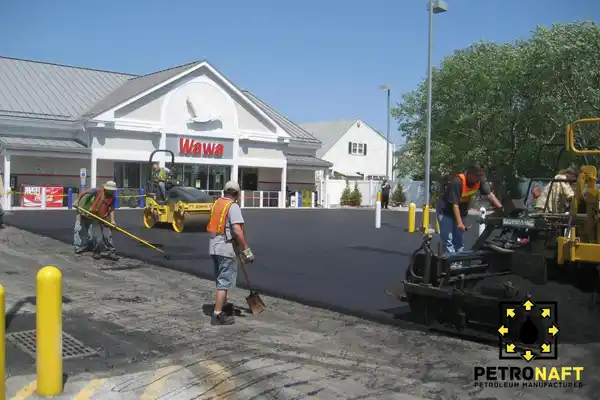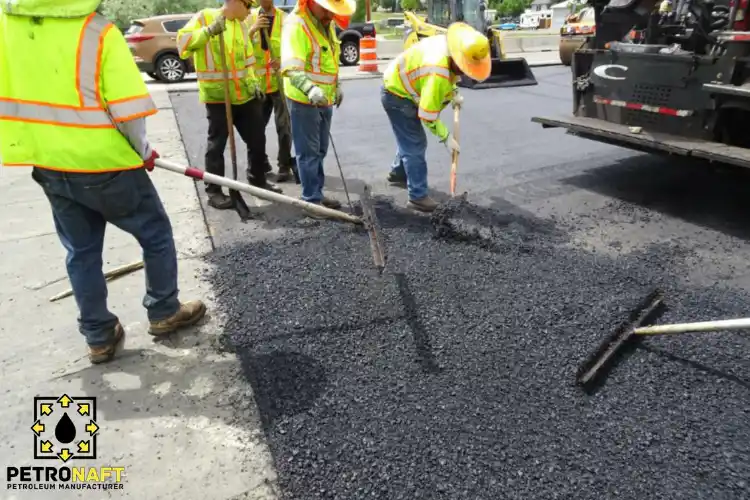Content Overview
The Importance of Asphalt Installation
The significance of asphalt installation cannot be overstated, as it plays a crucial role in the lifespan and performance of any roadway or paved surface. A well-executed asphalt installation not only ensures a smooth, safe, and visually appealing surface, but also minimizes the need for extensive repairs and maintenance in the long run.
Asphalt is a wonderful material for a variety of purposes
Whether it’s time to replace an old pavement that already exists or you’re thinking about starting a new project, asphalt is a good choice. Long driveways, car parks, industrial sites, and other large areas can all benefit from the sturdy and stable basis that asphalt offers.
What steps are included in the asphalt installation?
The following steps are involved in the process of installing asphalt:
1-The importance of preparation and accurate measurement
2-The excavation of the site as well as its preparation
3-Laying the basecourse
4-Laying asphalt
5-Letting it set and get firm
This article provides a breakdown of the necessary stages for a typical asphalt installation project. Nevertheless, the level of difficulty of each project differs, and as a result, these phases may be modified as necessary.
In order to ensure that water runoff is controlled, additional considerations pertaining to drainage solutions will need to be made due to the fact that there are rules and practicalities that need to be taken into account. If severe drainage problems need to be solved, more work may need to be done both before and during the project.

The excavation of the site as well as its preparation
The first phase in the process of installing asphalt is the destruction and/or removal of the current driveway or site surface, which may or may not be required depending on the results of the first consultation.
If the land is allowed to stay unchanged, then it will need to be cleaned and compacted so that it can support more weight. This will require clearing the work area and its surrounding areas of any uneven features, such as rocks, rubbish, and any trees or plants that may be present.
The subgrade will need to be graded in order to attain the ideal slope for water drainage and run-off, regardless of whether or not any preliminary works are necessary.
If the present surface is going to be kept, then there will be less of a requirement for this site preparation, and the new surface could simply need some minor repairs, edge tie-ins, and sweeping before it can be installed.
At this point, further work to direct stormwater runoff may be put in place depending on any drainage solutions that may already be in place.
Laying the basecourse
The basecourse can be composed of limestone, road base, gravel, or recycled concrete, depending on the availability of these materials in the area where the work is being done.
The laying down of the basecourse is a vital step in the construction of any asphalt project. A good basecourse has to have slopes that allow water to drain away effectively, and it also has to be compacted and water-bound so that it can become firm and provide a sturdy foundation for the asphalt layer that goes on top. A basecourse that is of superior quality offers excellent resistance to the wear and tear that can be brought on by factors such as heavy use, erosion, and the effects of the elements, among other things.
It is essential that the basecourse be completely compacted and correctly water-bound to the precise form, line, and level that are needed for the asphalt surface that will eventually be paved over.
Laying asphalt (Modified with Gilsonite)
Hot-mix asphalt is a combination of aggregate (sand, granite, or gravel) and bitumen 60-70 or other types of bitumen, such as emulsion bitumen, which can be used with special Gilsonite called “Gilsonite for Asphalt” for more durability. This mixture is then blended at a high temperature to dry the aggregate, improve viscosity, and improve flexibility. These qualities make the combination malleable, making it simpler to put down, grade, and level it before the material cools and solidifies. Due to the high temperature of hot-mix asphalt, it is the ideal material to use when trying to fill in small gaps or navigate acute curves in a driveway.
It is easy to make a mistake during this procedure, which might potentially put you in harm’s way if you do not have access to the appropriate specialist equipment. As a result, you need to depend on expert contractors that work with bitumen and asphalt.
Letting it set and get firm
Prior to the process of installing asphalt, the basecourse may be used to construct an appealing and useful curb along the borders of the roadway, if that is something you wish. It is common practice to lay additional components, such as pavers, on walkways and smaller areas that are adjacent to a parking lot before laying asphalt. This is done to reduce the likelihood that the new asphalt will sustain damage to its surface.
The oxidation (also known as hardening or “curing”) of a newly poured asphalt surface takes some time and this is the last stage of asphalt installation. nonetheless, in most situations, the surface may be gently used the very following day. One of the reasons asphalt pavements may persist for decades is because they completely harden and become more resistant to damage over the course of a lengthy period of time.
Latest Innovations in Asphalt Installation Techniques (Insights Added August 2024)
Asphalt installation has evolved significantly over the years, with recent innovations offering substantial improvements in sustainability, efficiency, and overall performance. These advancements are shaping the future of road construction and paving, making them more eco-friendly and cost-effective. Below are some of the most notable advancements in asphalt technology that can greatly enhance the quality and durability of your asphalt surfaces.
Warm Mix Asphalt Technology for Reduced Environmental Impact
Warm Mix Asphalt (WMA) technology is becoming increasingly popular due to its ability to reduce emissions and energy consumption. This method allows asphalt to be mixed and compacted at lower temperatures, resulting in fewer greenhouse gas emissions and improved workability, even in cooler climates. The technology also extends the paving season and enhances the long-term performance of asphalt surfaces.
Incorporating Recycled Materials for Sustainability
The use of recycled materials, such as Reclaimed Asphalt Pavement (RAP) and Jet Grouting Waste (JGW), in asphalt mixtures is a major step toward sustainable construction practices. These materials not only help reduce the environmental footprint of road construction but also improve the mechanical properties of asphalt. For instance, mixtures containing JGW exhibit increased stiffness and reduced strain, making them more durable under heavy loads.
Self-Healing Asphalt for Extended Pavement Life
Self-healing asphalt is an emerging technology that can significantly reduce the need for maintenance and repairs. This innovative material can repair itself when minor cracks occur, prolonging the life of the pavement. Techniques such as microwave heating, the use of nanocomposites, and the incorporation of microcapsules are being developed to trigger the self-healing process, making this a promising solution for long-lasting road surfaces.
Electrically Heated Asphalt for Winter Road Safety
A groundbreaking innovation in asphalt installation is the use of electrically heated ribbons embedded within the asphalt layers. This technology helps prevent ice formation and quickly melts snow on road surfaces, enhancing safety during winter months. While still in development, this method has shown great potential for wider application in regions with harsh winter conditions.
Phase Change Materials to Combat Urban Heat Islands
The integration of Phase Change Materials (PCMs) into asphalt pavements is a cutting-edge approach to mitigating the Urban Heat Island (UHI) effect. PCMs absorb and release heat during phase transitions, helping to maintain lower surface temperatures in urban areas. This technology not only improves thermal regulation but also preserves the mechanical integrity of the asphalt, making it a valuable addition to modern road construction.
These innovations represent significant strides in the asphalt industry, offering solutions that are not only environmentally friendly but also enhance the durability and safety of paved surfaces. By adopting these advanced techniques, you can ensure that your asphalt installations are at the forefront of modern construction practices, providing long-lasting and sustainable results.
Purchasing from Petro Naft
For more detailed information and to purchase the product discussed in this article, please visit the dedicated product page below. Alternatively, use the various communication channels provided on our site to register your purchase inquiry or take advantage of our expert guidance.
Prepared by the PetroNaft Co. research team.




8 Responses
I was suggested this blog via my cousin. I’m not certain whether or not this post is written by way of him as no one else understand such exact about my trouble. You are incredible! Thank you!
Thank you, Maria! We’re glad to hear you found our post helpful. Asphalt installation is a process that can seem complex, but we strive to break it down for our readers. If you need further guidance or product recommendations for your project, feel free to reach out to us.
It’s difficult to acquire knowledgeable individuals within this topic, however, you appear to be you know what you’re dealing with! Thanks
Hi Cayla, thank you for your comment! We’re glad you found the article informative. Asphalt installation is a detailed process, and we aim to provide practical insights. Feel free to reach out if you have any questions or need further guidance.
Thank you for taking the time to discuss this particular, I feel strongly about this as well as love learning more on this subject. If at all possible,
Hi Tory, thank you for your comment! We’re pleased to hear that you found the article informative. If you’d like to learn more or need guidance with your project, feel free to reach out.
Superb brief which post helped me a lot. Say thank you We seeking your information?–.
Hi Serafina, thank you for your comment! We’re glad you found the post helpful. Stay tuned for more updates, and feel free to reach out if you have any questions.